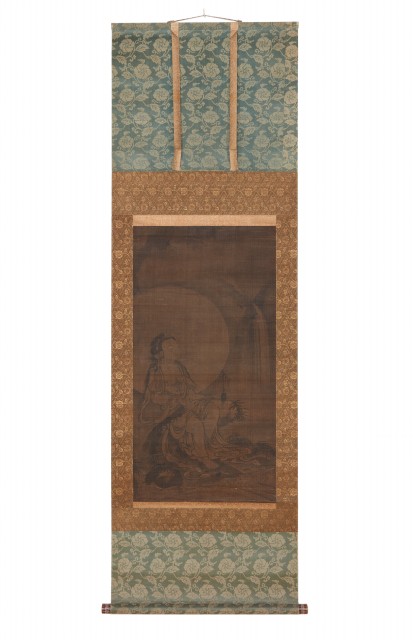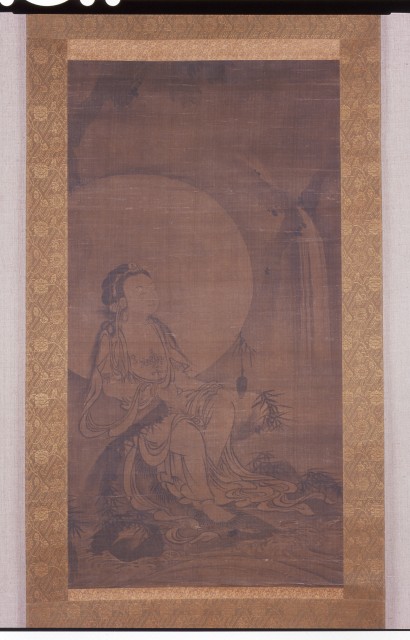
Byakue Kannon (White-robed Kannon)

Photography by Synthescape, Digital image © Asia Society

Photography by Lynton Gardiner, Digital image © Asia Society
Attributed to Gekko (Ch. Yue Hu)
Byakue Kannon (White-robed Kannon)
late 14th-15th century
Japan
Hanging scroll; ink on silk
Image only, H. 33 x W. 17 in. (83.8 x 43.2 cm)
Asia Society, New York: Mr. and Mrs. John D. Rockefeller 3rd Collection, partial gift of Rosemarie and Leighton Longhi in honor of Sherman E. Lee, 1998.1
Licensing inquiries
Images of the Bodhisattva of Compassion, Kannon (Chinese: Guanyin, Sanskrit: Avalokiteshvara), clothed in white robes begin to appear in China around the 12th century. Although no doctrinal or Indian source is known for this form, it seems to be closely related as an iconic image to two other specifically Chinese manifestations of the deity, Water-Moon Kannon and Kannon with Willow. Images of the Water-Moon Kannon seated on a rocky outcrop overhanging turbulent water had appeared in China as early as the 10th century, underpinned by textual references to Mt. Potalaka, the abode of Kannon located off the south coast of India. By the 12th century, depictions of White-robed Kannon were becoming popular with Chan (Japanese: Zen) monks, who brought them to Japan, where Japanese versions frequently adorned the living quarters of Zen monasteries. Unlike orthodox religious painting, images of White-robed Kannon were executed in monochrome, which lent them a psychological immediacy and spontaneity that was prized by Zen adherents. Although Indian Buddhist sources describe Kannon as a male being, depictions in both China and Japan became increasingly androgynous over time. This piece is distinguished by a sensuous portrayal of the robes, voluptuous anatomy, and a sweet countenance. The hairstyle, in particular, seems to be based on contemporary female, rather than male, coiffure.

